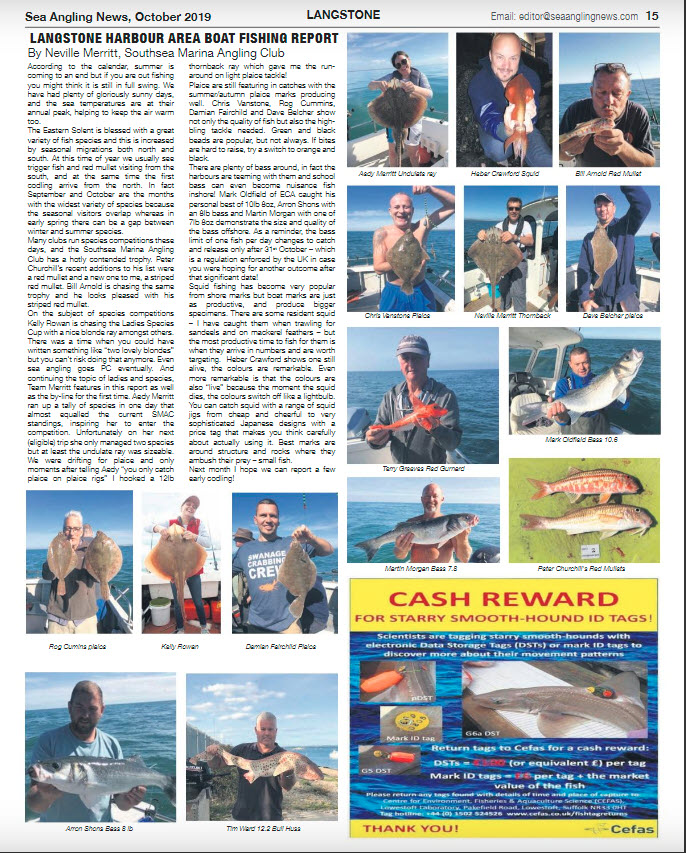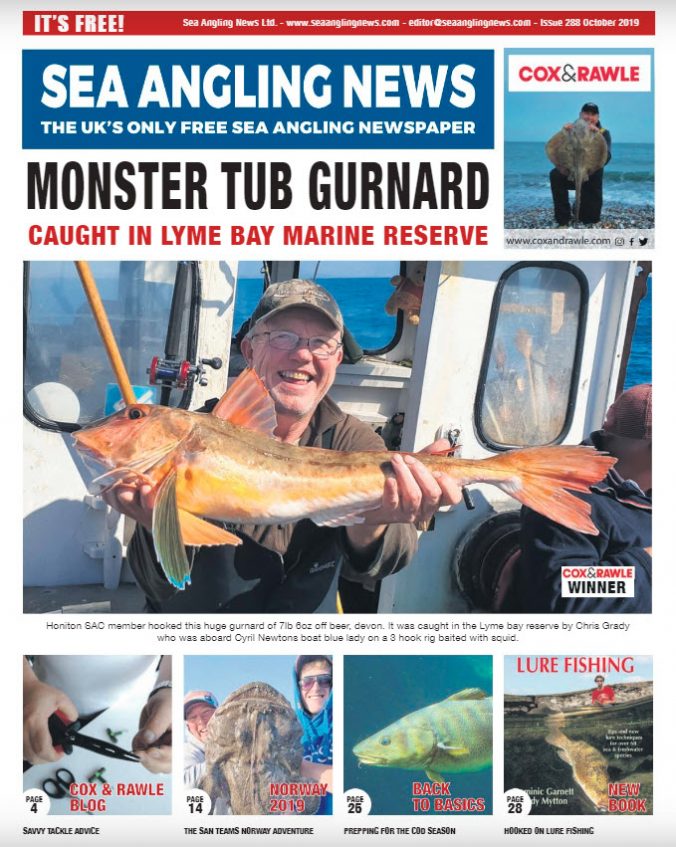According to the calendar, summer is coming to an end but if you are out fishing you might think it is still in full swing. We have had plenty of gloriously sunny days, and the sea temperatures are at their annual peak, helping to keep the air warm too.
The Eastern Solent is blessed with a great variety of fish species and this is increased by seasonal migrations both north and south. At this time of year we usually see trigger fish and red mullet visiting from the south, and at the same time the first codling arrive from the north. In fact September and October are the months with the widest variety of species because the seasonal visitors overlap whereas in early spring there can be a gap between winter and summer species.
Many clubs run species competitions these days, and the Southsea Marina Angling Club has a hotly contended trophy. Peter Churchill’s recent additions to his list were a red mullet and a new one to me, a striped red mullet. Bill Arnold is chasing the same trophy and he looks pleased with his striped red mullet.
On the subject of species competitions Kelly Rowan is chasing the Ladies Species Cup with a nice blonde ray amongst others. There was a time when you could have written something like “two lovely blondes” but you can’t risk doing that anymore. Even sea angling goes PC eventually. And continuing the topic of ladies and species, Team Merritt features in this report as well as the by-line for the first time. Aedy Merritt ran up a tally of species in one day that almost equalled the current SMAC standings, inspiring her to enter the competition. Unfortunately on her next (eligible) trip she only managed two species but at least the undulate ray was sizeable. We were drifting for plaice and only moments after telling Aedy “you only catch plaice on plaice rigs” I hooked a 12lb thornback ray which gave me the run-around on light plaice tackle!
Plaice are still featuring in catches with the summer/autumn plaice marks producing well. Chris Vanstone, Rog Cummins, Damian Fairchild and Dave Belcher show not only the quality of fish but also the high-bling tackle needed. Green and black beads are popular, but not always. If bites are hard to raise, try a switch to orange and black.
There are plenty of bass around, in fact the harbours are teeming with them and school bass can even become nuisance fish inshore! Mark Oldfield of ECA caught his personal best of 10lb 8oz, Arron Shons with an 8lb bass and Martin Morgan with one of 7lb 8oz demonstrate the size and quality of the bass offshore. As a reminder, the bass limit of one fish per day changes to catch and release only after 31st October – which is a regulation enforced by the UK in case you were hoping for another outcome after that significant date!
Squid fishing has become very popular from shore marks but boat marks are just as productive, and produce bigger specimens. There are some resident squid – I have caught them when trawling for sandeels and on mackerel feathers – but the most productive time to fish for them is when they arrive in numbers and are worth targeting. Heber Crawford shows one still alive, the colours are remarkable. Even more remarkable is that the colours are also “live” because the moment the squid dies, the colours switch off like a lightbulb. You can catch squid with a range of squid jigs from cheap and cheerful to very sophisticated Japanese designs with a price tag that makes you think carefully about actually using it. Best marks are around structure and rocks where they ambush their prey – small fish.
Next month I hope we can report a few early codling!


Leave a Reply
You must be logged in to post a comment.